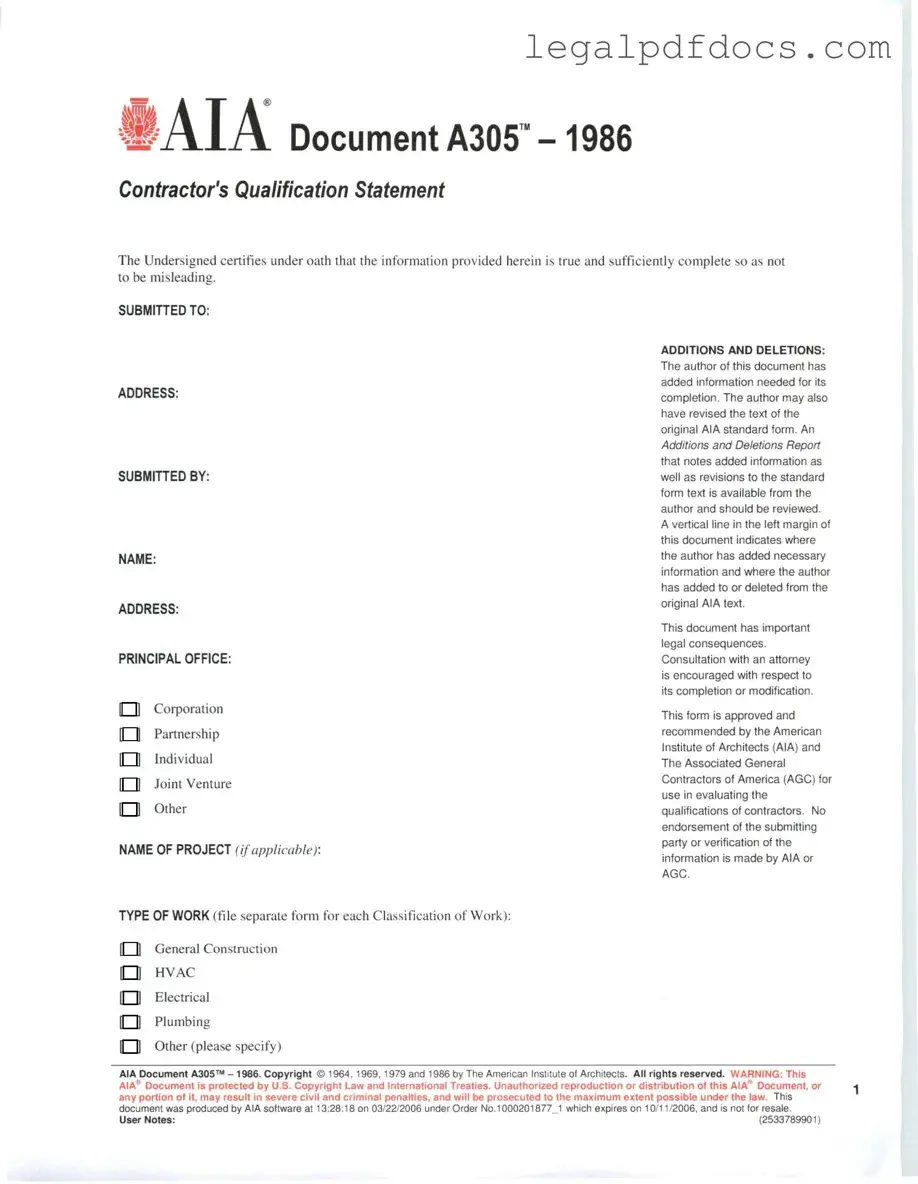The AIA A305 form, officially known as the Contractor’s Qualification Statement, serves as a vital tool in the construction industry, providing essential information about a contractor's qualifications, experience, and financial stability. This form is often utilized during the bidding process, allowing project owners and architects to assess the capabilities of potential contractors before awarding contracts. Key components of the A305 include details about the contractor’s organizational structure, a summary of relevant project experience, and an overview of the firm’s financial status. By requiring contractors to disclose their past performance, bonding capacity, and insurance coverage, the A305 helps ensure that only qualified firms are considered for significant projects. Additionally, the form can streamline the prequalification process, making it easier for owners to compare different contractors on a level playing field. Understanding the nuances of the AIA A305 form is crucial for both contractors looking to secure work and for owners aiming to select the best possible candidates for their projects.
